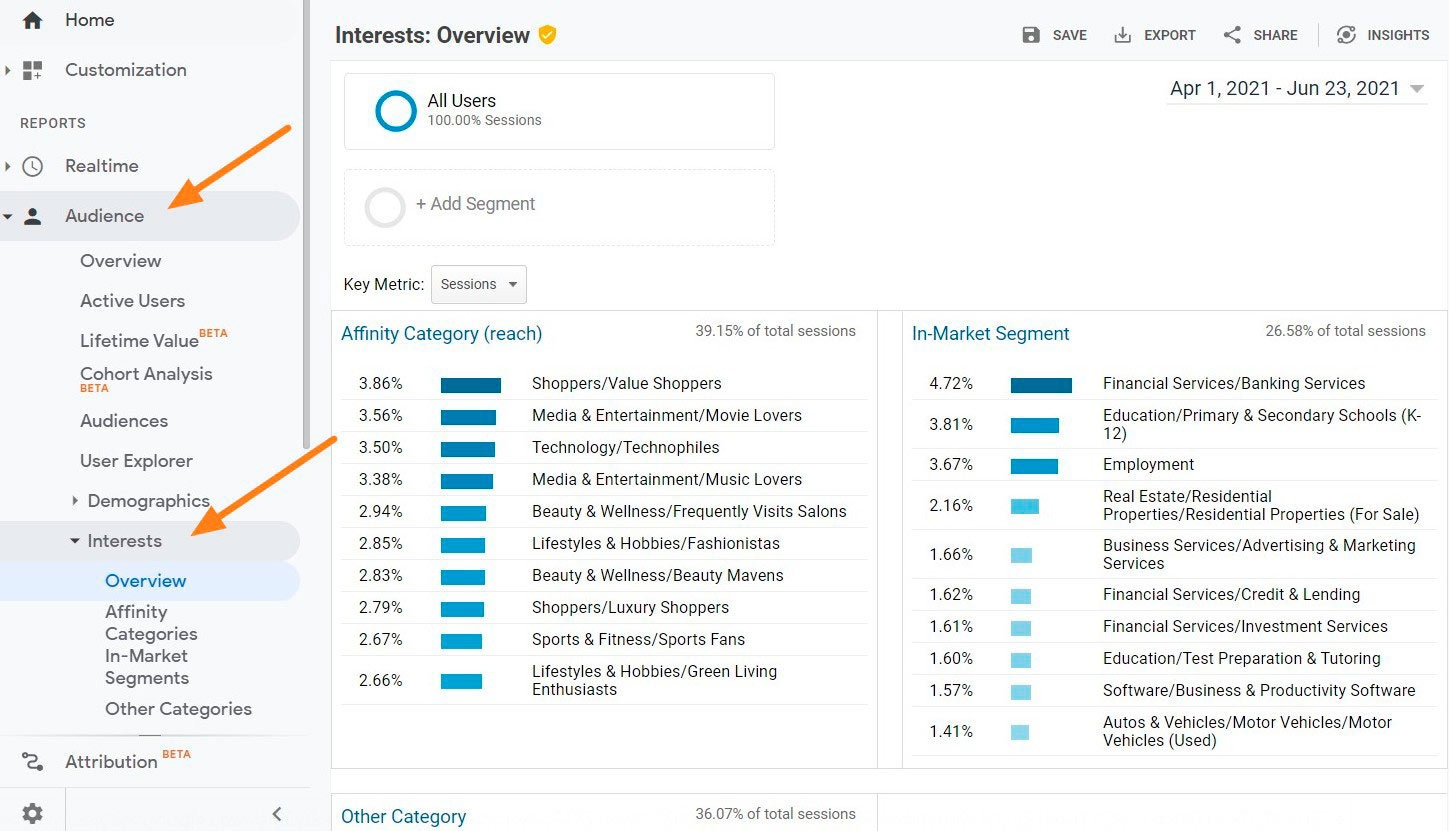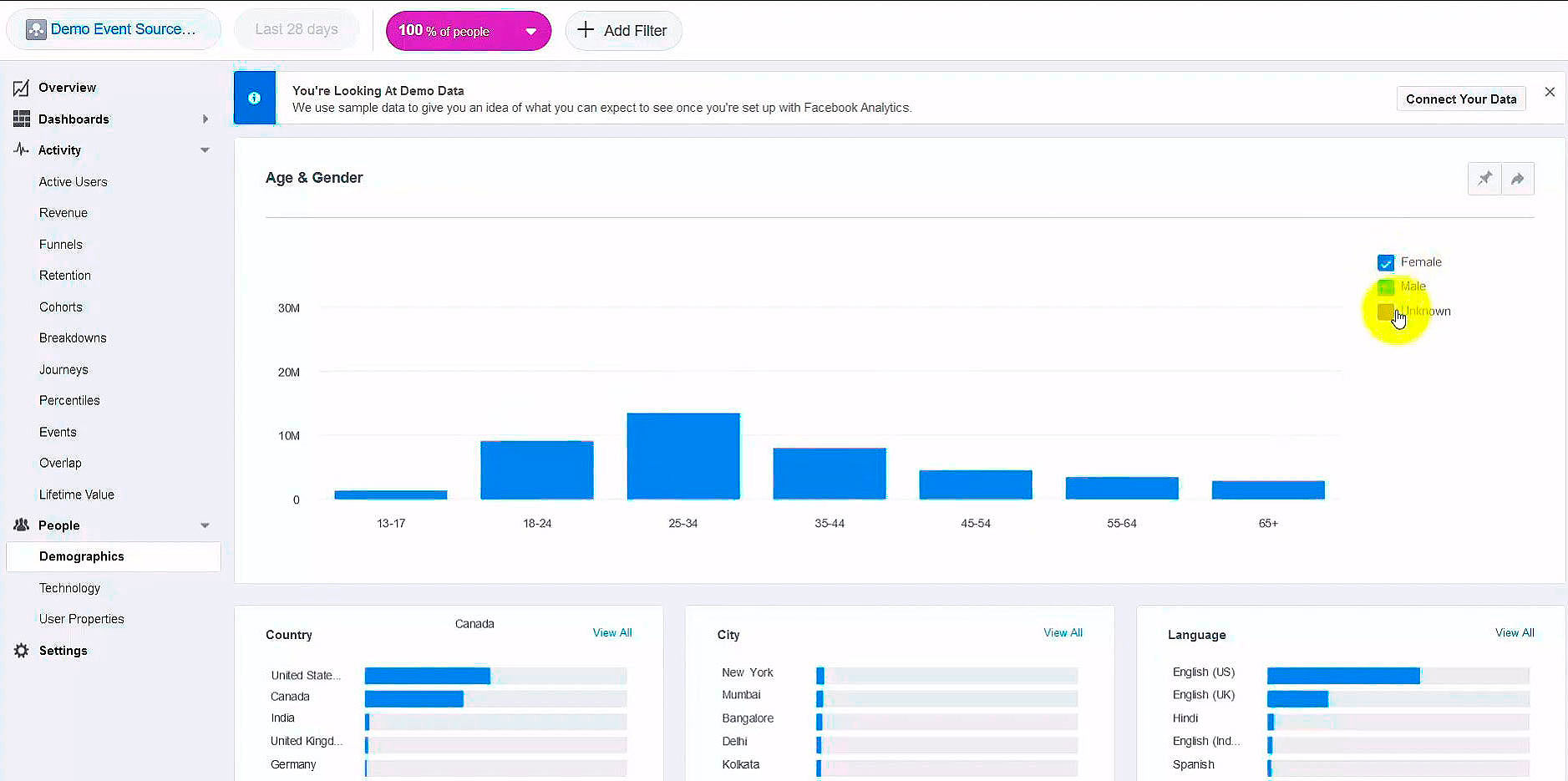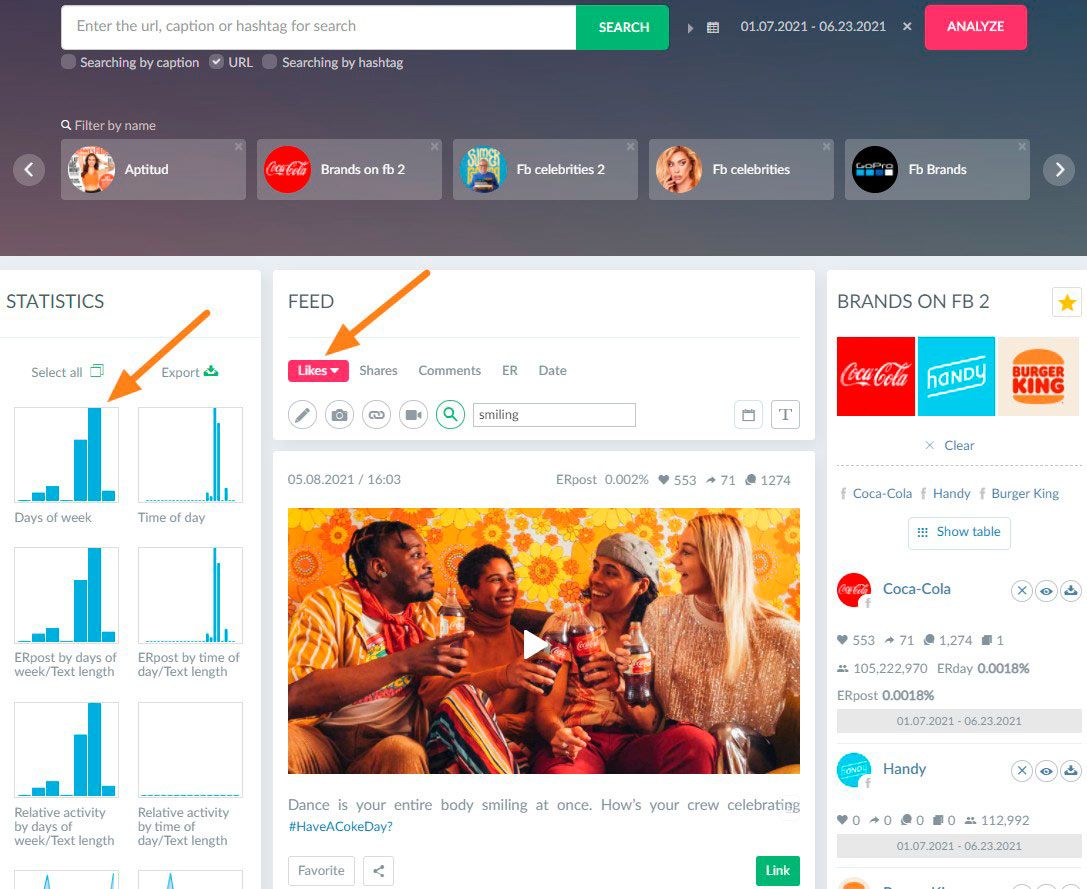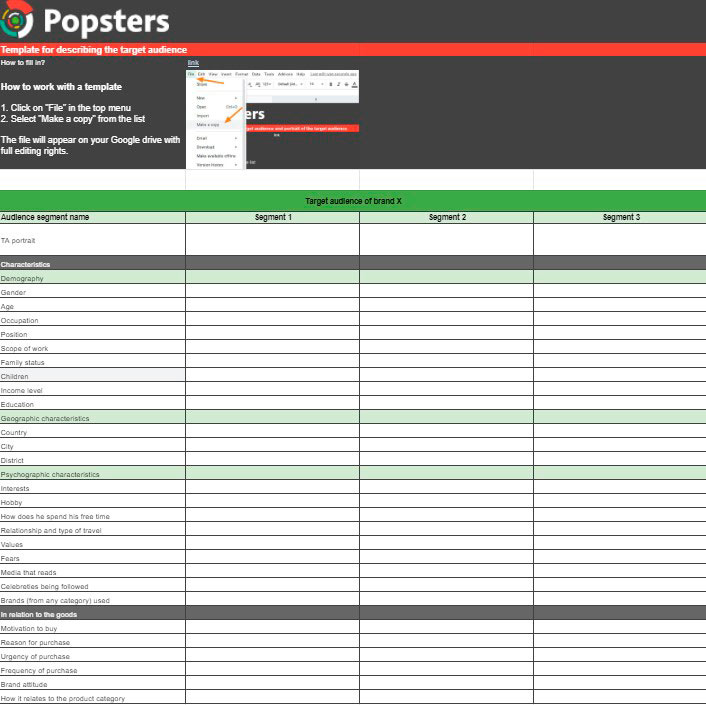How to Create a Target Audience Profile Correctly

Here we responsibly and thoroughly discuss the very basics of Social media marketing and content – target audience profile. What it is, how to identify it, what are different kinds of it. In the end of the article, a useful template for audience analysis is given.
Why You Need to Know Your Target Audience
The development of a marketing strategy starts with the identification of the target audience. But if you happened to skip this step or are only planning it, let us find out why one would spend time, efforts and sometimes money to profile the target audience.
Reduce Advertising Expenses
Since we are talking about marketing, we are talking about promotion budgets as well. And it is likely not about traditional ad channels but the digital ones, where you can calculate the return on every penny invested, meaning optimize the budget spending, too.
If we know precisely the project’s target audience, we will be able to reduce the costs due to more precise targeting. We will stop showing ads to people from regions that do not generate sales and spending budget to users of an age with low interest in the product.
Improve Your Communication
Personalizing everything is trending in recent years. The more personally you address to a user, the likely you are to win their attention and trust. And to have the communication personalized, you have to know how to analyze the target audience.
For example, a makeup brand, in its communication with users, always addresses them as females. But if the brand analyzed the audience, it would found that 30% of sales are generated by male audience. To correct the situation with communication, the brand may switch to geneder-neutral form of address or differentiate addresses, e.g. in email distributions.
Find Growth Drivers
Understanding you audience helps in developing your product, meaning higher sales. For example, target audience profile analysis will allow finding segments that are interested in the product category but do not see a product that would fit them in the product range.
You could also avoid mistakes of being guided by stereotypes — as with the above example of a makeup store. Taking into account different segments of the audience will help to grow individual product categories that received less attention than due because of your lack of information.
What Is Target Audience
A target audience is the group of people who are primarily targeted by the marketing communication and who are most likely to buy your product.
The core of the target audience is the most active and interested group of potential consumers who generate highest sales and profits, who use the product more often and need it more than other people.
Target Audience Characteristics
Target audience is characterized by several shared traits. Using these traits, it can be divided into several segments.
Demography
This includes basic traits of your audience — age and gender, job, family, income.
- Gender;
- Age;
- Occupation;
- Position;
- Professional sphere;
- Family status;
- Children;
- Income level;
- Education.
Geography
These traits describe your audience’s location. The depth of detail is project-specific. For example, an international company wants to know the country, while a small flower shop — job and residential locations of the target audience.
- Country;
- Municipality;
- District.
Psychography
It describes the interests and life style of your clients. Here we move away from statistics and try to understand what these people are — what they are interested in, how they spend their free time, what hobbies they have, what they dream and afraid of.
- Interests;
- Hobbies;
- Leisure;
- Values;
- Fears;
- Mass media subscribed to;
- Public figures followed;
- Brands (of any category) consumed.
Behavior
It describes your clients in their relation to the product category and your brand. For example, you promote a furniture store. So, you wonder: How does the audience choose furniture? How often do they make such purchases? How much do they spend for it? What are the motives — e.g., repair (necessity) or interior improvement (desire). What is also important is the audience’s attitude specifically to your brand: Do they know it? Are they loyal to it?
Are you going to deal with audience that is already warm or win audience away from your competitors? The answers to these questions will influence your marketing strategy and communication in social media and advertising.
- Purchasing motivation;
- Purchase trigger;
- Purchase urgency;
- Purchase frequency;
- Relation to the product category;
- Attitude to the brand.
The 5W Method (by M. Sherrington)
Yes, marketers love tools named with acronyms. One popular method to describe target audience is 5W: five questions about the consumer and the product.
What does a consumer want? What is the product type? What qualities should the product have?
Who purchases the product? How can they be described?
Why does a consumer want this product? What need would it cover? What motivation guides them? What is their attitude to the brand?
When will the purchase take place? Is it a quick or long sale?
Where will the purchase take place? What distribution channel will the consumer choose?
What is a Target Audience Profile
TA profile is a description of a particular representative of the segment, your perfect client.
The Difference between Target Audience and a User Profile
Target Audience portrait describes not a group of people but a particular user, your perfect client. For example, if we describe the target audience, saying: “Women, between 25 and 40, have kids under 7, working / on maternity leave, interested in healthy life style”, a portrait would look like: “Kate, 31; married, children: 3 and 7 years old. Works as HR Manager in a large company. Doing Pilates.”
Target Audience Profile Examples
Getting back to the furniture store case. Let us imagine what TA portraits this project may have.
Lucie, 46
Buying an apartment for her eldest son and furnishes it herself. She is not into modern interior design trends but wants to create a simple clean look.
Works as Chief Accountant in banking. Married, two children — 20 and 14 years old. Enjoys reading and domestic car travels.
Lucie would fall within the “Doing Repair” segment. It could be described as follows:
Men and women between 35 and 55, middle+ income, interests: travel, art, wellbeing. Married, have children. Purchase real estate and do repair, value reliability and quality. Relation to the product category: buy furniture as necessary, to last for ages. Attitude to the brand: trust quality, willing to overpay for it.
Michael, 24
Choosing a sofa for a rental apartment. Values minimalism and mobility. Works as Account Manager in an advertising agency. Travels by couchsurfing, likes photography. Not married, no children.
And here is what the audience segment that includes Michael could look like:
Men and women between 22 and 25, middle to middle+ income, interests: travel, entertainment, personal growth, trending places, social media. Not married, no children. Rent or buy their first housing. Relation to the product category: easy assembly, low price, modern appearance. Attitude to the brand: loyal due to product design and the service, but will go for an alternative if it has more attractive price and similar qualities. These are just a few examples of audience profile.
How to Create a target Audience Profile
An accurate description of your potential client will help to adjust your communication and find new ideas for address to the audience, subjects for posts, messages for ads.
Your real clients could become prototypes for your target audience profile — survey them for a little reward (e.g., a discount coupon) or draw the portrait from the available data (of course, this excludes confidential information, photo and real name).
Target Audience Types
Primary target audience is the top priority. These are people who make the decision to buy.
Secondary target audience participates in but does not initiate the purchase.
For example, a child is primary target audience for a toy shop. And parents are secondary, since it is them who pay for the purchase.
Target Audience Identification Methods
You need to get quite a few client data. Now, we suspect that you already start to worry about where to get it.
Market Surveys
This is the most resource-consuming but also the most efficient way to gather data of the target audience.
You can have them carried out by survey agencies, which is expensive and serious. But you can also handle it yourself, in which case you will find useful these 2 tools:
Online Polling
Distribute a poll (can be conveniently made in Google Forms) with questions of your interest to the subscribers or buyers mailing list.
To motivate them, offer a little discount for the feedback.
Interviews with Audience Members
In-depth interviews with individual clients are more complex than a poll but allow finding unexpected insights and problems that you could not foresee in the poll yourself. You can have an interview online — appoint several Zoom calls 20 to 30 mintes each, make a list of questions in advance. A discount or loyalty points would again be a suitable motivator for the clients.
Google Analytics and Yandex Metrica, Facebook Pixel
You can acquire information about your clients from your website — analytics services gather user data and generate convenient reports from it. This information, however, is not 100%-correct, but it is still a good option if surveying is not available.
For example, Google Analytics collects data of the users’ gender, age, location, device details, and interests.
But users reveal their interests much more accurately in social networks. While a search engine may pick up irrelevant options (e.g., a user googled for a subject for the job, and the engine decided this is for hobby). Social media are normally used as a rest (unless you work in SMM), so the users reveal their real interests. This is very convenient and simplifies the task, especially when you need to create a profile of the target audience. These are identified by Facebook Pixel — in Facebook Analytics you will find a lot of information on your users who were detected by the pixel on the website and who engaged with the brand’s page in the social network. This includes interests, demography, occupation and pages followed by your TA members.
Popsters
If you have not yet acquired an audience on the website or social media, you can analyze your competitors’ audience. Of course, it is difficult to do it manually and you do not have access to social media statistics of others.
Use tools that allow examination of any pages and will help to quickly make a target audience profile. Popsters will show competitors’ user activity by day and hour and, most importantly, allow exporting all the posts for any period and sort them by engagement. So you will find the most interesting and relevant subjects for competitors’ audience — meaning for your target audience as well.
In addition, Popsters can sort posts by comment count. And reading of comments is a highly underestimated source of information for clients! Here you can find insights and fears. Together with claims to competitors, which you may take into account when developing your product;)
Target Audience Profile Template - Sheet
We have prepared a template to describe a target audience profiles. This spreadsheet will help to systematize your client data and will serve as a cue card with target audience characteristics.
To use the template of target audience, copy it to your drive (File — Create a copy) and edit fields as required :)
Useful articles on a similar topic:
Try Popsters Trial plan to get content activity statistics of any pages for a next 7 days for free
Try for free








